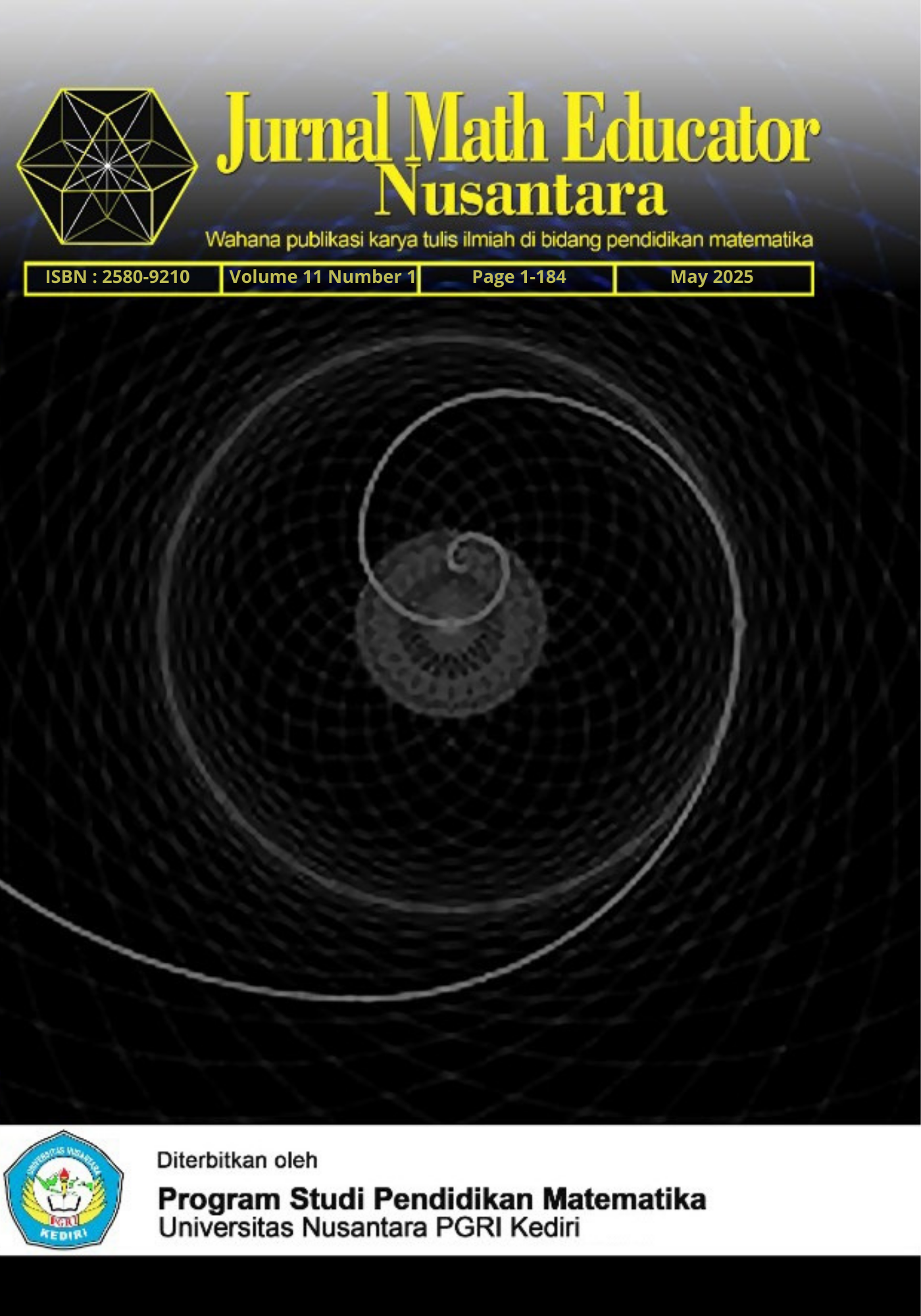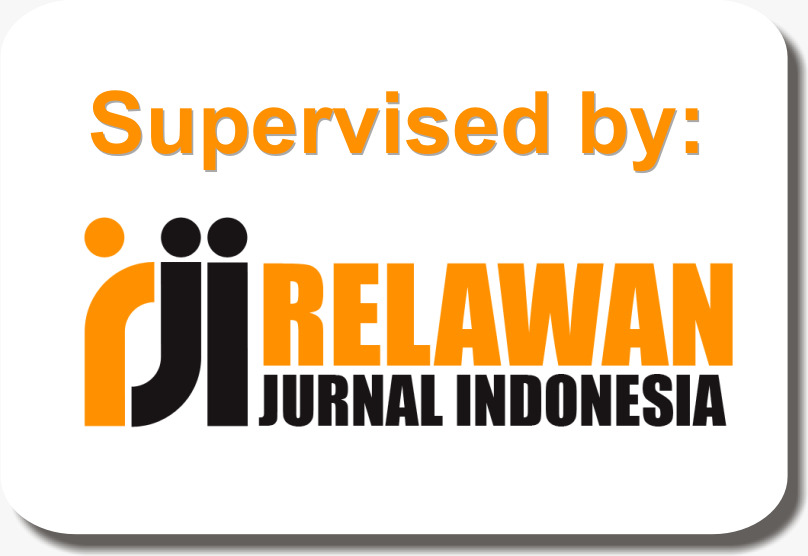Ethnomathematics study and educational values in fundamental activities at the langgar pusaka of sapit village
DOI:
https://doi.org/10.29407/jmen.v11i1.25097Keywords:
ethnomathematics, educational values, fundamental activities, langgar pusakaAbstract
Most people view mathematics as unrelated to real life or culture-free. However, this view is wrong because mathematics is a product of human activity. In this case, there is a way that connects mathematics with culture called ethnomathematics. This research aims to examine the concept of ethnomathematics and educational values in fundamental activities in the traditional house of Langgar Pusaka, Sapit Village, East Lombok. This traditional house not only has cultural and spiritual functions but also contains various aspects of mathematics in its architecture, construction, and ritual activities. This research uses a qualitative method with an ethnographic approach. Data were collected through observation, in-depth interviews, and documentation. The results showed that the fundamental activities found in the Langgar Pusaka traditional house reflect mathematical concepts such as geometry both in the building structure and ritual tools used in traditional processions, measurement, symmetry, and number patterns in ritual traditions. In addition, the fundamental activities carried out in the Langgar Pusaka traditional house contain educational values such as cooperation or cooperation called berikuk tinjal, mutual respect (tindih), moderation (semaik), and being economical (itiq). This study has the potential to be used as a mathematics learning resource and can be a reference in integrating local culture with contextualized mathematics learning in schools.
References
Abdullah, A. S. (2017). Ethnomathematics in perspective of sundanese culture. Journal on Mathematics Education, 8(1), 1–16. https://doi.org/10.22342/jme.8.1.3877.1-15
Agbata, B. C., Abraham, S., F, A. M., Kwabi, P. A., Okpako, S. O., & Arivi, S. S. (2024). Advancing Mathematics Education In Africa: Challenges, Strategies, And Prospects. Science World Journal, 19(3), 808–818.
Ahidin, U., Sudaryana, Y., Maddinsyah, A., Triwahyudi, F., & Sina, I. (2021). In Analysis of Promotional Strategies To Improve The Competitiveness Of Woven Fabrics (Case Study of Sasak Tribe Woven Fabric Craftsmen Group in West Nusa Tenggara). INCEESS. https://doi.org/10.4108/eai.17-7-2020.2303057
Aikenhead, G. S. (2017). Enhancing School Mathematics Culturally: A Path of Reconciliation. Canadian Journal of Science, Mathematics and Technology Education, 17(2), 73–140. https://doi.org/10.1080/14926156.2017.1308043
Albanese, V., & Perales, F. J. (2020). Mathematics conceptions by teachers from an ethnomathematical perspective. Bolema - Mathematics Education Bulletin, 34(66), 1–21. https://doi.org/10.1590/1980-4415v34n66a01
Alditia, L. M., & Nurmawanti, I. (2023). Ethnopedagogical Content in the Traditional Art of Sasak Ethnic Group: Gendang Beleq. Didaktika : Jurnal Kependidikan, 17(1), 1–15. https://doi.org/10.30863/didaktika.v17i1.4533
Amit, M., & Qouder, F. A. (2017). Weaving culture and mathematics in the classroom: the case of Bedouin ethnomathematics. Ethnomathematics and Its Diverse Approaches for. https://doi.org/10.1007/978-3-319-59220-6_2
Ananda, W., Risnanosanti, & Syofiana, M. (2024). Ethnomathematics in the traditional game lompek kodok bengkulu. Jurnal Math Educator Nusantara: Wahana Publikasi Karya Tulis Ilmiah Di Bidang Pendidikan Matematika, 10(1), 140–153.
Anisa, Y., Siregar, R. F., & Hafiz, M. (2023). Ethnomathematics as an exploration of cultural mathematical concepts in traditional Indonesian Engklek games. Asian Research Journal of Mathematics, 19(7), 65-75. https://doi.org/10.9734/arjom/2023/v19i7680
Baker, M. (2023). The western mathematic and the ontological turn: Ethnomathematics and cosmotechnics for the pluriverse. Indigenous Knowledge and Ethnomathematics, 243–276. https://doi.org/10.1007/978-3-030-97482-4_9
Civil, M. (2002). Culture and mathematics: a community approach. Journal of Intercultural Studies, 23(ue 2)). https://doi.org/10.1080/07256860220151050A
D'Ambrosio, U. (2016). An overview of the history of Ethnomathematics. In U. D. a. Milton Rosa, D. C. Orey, L. Shirley, W. V. Alangui, P. Palhares, & M. E. Gavarrete (Eds.), Current and Future Perspectives of Ethnomathematics as A Program (pp. 5–10). Camp. Springer US. https://doi.org/10.1007/978-3-319-30120-4_3
Fauzi, L. M., Ahyan, S., Rasidi, A., Wardi, Z., & Gazali, M. (2023). Ethnomathematic Study: Number System and Cultural Meaning in the Sasak Tribe Community. Jurnal Pendidikan Matematika (JUPITEK, 6(1), 19–26. https://doi.org/10.30598/jupitekvol6iss1pp19-26
Fauzi, L. M., Hayati, N., Gazali, M., & Fauzi, A. (2022). Ethnomathematics : Exploration of Mathematics and Cultural Values in the Performing Arts of the Sasak Tribe Perisean. Hypotenuse : Journal of Mathematical Society, 4(1), 24–37. https://doi.org/10.18326/hypotenusa.v4i1.7240
Hadi, A. (2024). Bentuk dan pelaksanaan ritual adat pada rumah adat Langgar Pusaka Desa Sapit [Form and implementation of traditional rituals at the Langgar Pusaka traditional house of Sapit Village. Personal Communication.
Hattikudur, S., Sidney, P. G., & Alibali, M. W. (2016). Does comparing informal and formal procedures promote mathematics learning? The benefits of bridging depend on attitudes toward mathematics. Journal of Problem Solving, 9(1), 13–27. https://doi.org/10.7771/1932-6246.1180
Hunter, J. (2021). An Intersection of Mathematics Educational Values and Cultural Values: Pāsifika Students' Understanding and Explanation of Their Mathematics Educational Values. ECNU Review of Education, 4(2), 307–326. https://doi.org/10.1177/2096531120931106
Hunter, J., & Hill, J. L. (2024). Exploring mathematical wellbeing across cultures: insights from diverse students. Mathematics Education Research Journal, 0123456789. https://doi.org/10.1007/s13394-024-00500-5
Kahfi, H. D. (2024). Bentuk dan pelaksanaan ritual adat pada Langgar Pusaka Desa Sapit [Form and implementation of traditional rituals at the Langgar Pusaka of Sapit Village. Personal Communication.
Manik, E. (2020). Ethnomathematics dan Pendidikan Matematika Realistik. In... Ethnomathematics Magister Pendidikan Matematika .... uhn.ac.id. https://uhn.ac.id/files/akademik_files/2105100952_2020_Ethnomathematics
Mansion, K. (2022). A Case Study Exploring Ethnomathematics' Effects on Students' Cultural and Historical Literacies in a Virtual Classroom. https://scholarworks.gsu.edu/mse_diss/125/%0Ahttps://scholarworks.gsu.edu/cgi/viewcontent.cgi?article=1134&context=mse_diss
Miles, M. B., & Huberman, A. M. (2014). Qualitative data analysis: a methods sourcebook. SAGE Publications, Inc. https://revistas.ufrj.br/index.php/rce/article/download/1659/1508%0Ahttp://hipatiapress.com/hpjournals/index.php/qre/article/view/1348%5Cnhttp://www.tandfonline.com/doi/abs/10.1080/09500799708666915%5Cnhttps://mckinseyonsociety.com/downloads/reports/Educa
Prahmana, R. C. I. (2022). Ethno-Realistic Mathematics Education: The promising learning approach in the city of culture. SN Social Sciences, 2(12). https://doi.org/10.1007/s43545-022-00571-w
Putra, R. Y., Wijiyanto, Z., & Wiodo, S. A. (2020). Ethnomathematics: Soko Tunggal Mosque For Geometry 2D Learning. In... Pembelajaran Matematika. researchgate.net. https://www.researchgate.net/profile/Sri-Widodo-5/publication/345966778_Etnomatematika_Masjid_Soko_Tunggal_Dalam_Pembelajaran_Geometri_2D/links/600594e092851c13fe1d2bbe/Etnomatematika-Masjid-Soko-Tunggal-Dalam-Pembelajaran-Geometri-2D.pdf
Rosa, M., & Orey, D. (2016). Humanizing Mathematics through Ethnomodelling. Journal of Humanistic Mathematics, 6(2), 3–22. https://doi.org/10.5642/jhummath.201602.03
Rosa, M., & Orey, D. C. (2021). Applying Ethnomodelling to Explore Glocal Mathematical Knowledge Systems. Acta Scientiae, 23(1), 199–232. https://doi.org/10.17648/acta.scientiae.6241
Sabilirrosyad, S. (2018). Ethnomathematics Sasak: Eksplorasi Geometri Tenun Suku Sasak Sukarara Dan Implikasinya Untuk Pembelajaran. Jurnal Tatsqif, 14(1), 49–65. https://doi.org/10.20414/jtq.v14i1.21
Simamora, R. E., Saragih, S., & Hasratuddin, H. (2018). Improving Students' Mathematical Problem Solving Ability and Self-Efficacy through Guided Discovery Learning in Local Culture Context. International Electronic Journal of Mathematics Education, 14(1), 61–72. https://doi.org/10.12973/iejme/3966
Spradley, J. P. (2016). The Ethnographic Interview. In The SAGE Encyclopedia of Communication Research Methods. Waveland Press, Inc. https://doi.org/10.4135/9781483381411.n168
Supiyati, S., Hanum, F., & Jailani. (2019). Ethnomathematics in sasaknese architecture. Journal on Mathematics Education, 10(1), 47–57. https://doi.org/10.22342/jme.10.1.5383.47-58
Yamin, M. (2024). Nilai-nilai pendidikan dan konsep arsitektur rumah adat Langgar Pusaka Desa Sapit [Educational values and architectural concepts of the Langgar Pusaka traditional house of Sapit Village. Personal Communication.
Downloads
Published
Issue
Section
License
Copyright (c) 2025 Lalu Muhammad Fauzi, Rody Satriawan, Nila Hayati

This work is licensed under a Creative Commons Attribution 4.0 International License.
Authors who publish with this journal agree to the following terms:
- Copyright on any article is retained by the author(s).
- The author grants the journal, the right of first publication with the work simultaneously licensed under a Creative Commons Attribution License that allows others to share the work with an acknowledgment of the work’s authorship and initial publication in this journal.
- Authors are able to enter into separate, additional contractual arrangements for the non-exclusive distribution of the journal’s published version of the work (e.g., post it to an institutional repository or publish it in a book), with an acknowledgment of its initial publication in this journal.
- Authors are permitted and encouraged to post their work online (e.g., in institutional repositories or on their website) prior to and during the submission process, as it can lead to productive exchanges, as well as earlier and greater citation of published work.
- The article and any associated published material is distributed under the Creative Commons Attribution-ShareAlike 4.0 International License
















